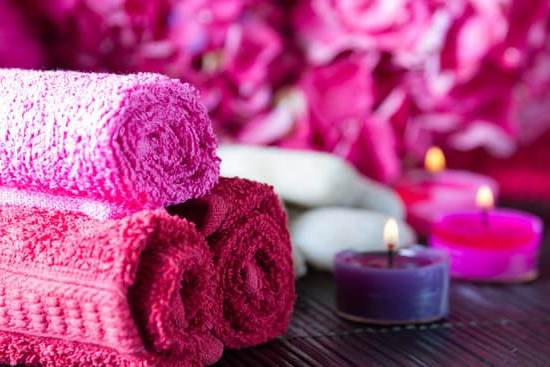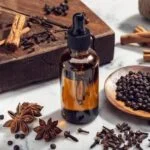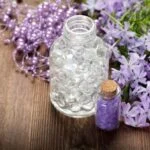What does aromatherapy massage involve? Aromatherapy massage combines the therapeutic benefits of essential oils with the art of massage therapy, offering a holistic approach to wellness. This practice has gained popularity for its ability to promote relaxation, relieve stress, and enhance overall well-being. As we delve into the world of aromatherapy massage, it is essential to understand its origins, the essential oils commonly used, and the various techniques involved in this soothing treatment.
The history of aromatherapy dates back centuries, with roots in ancient civilizations like Egypt, China, and India. Over time, this practice has evolved into a popular form of alternative medicine that harnesses the power of plant extracts for healing purposes.
Essential oils play a key role in aromatherapy massage, each possessing unique therapeutic properties that target specific physical and emotional concerns. From lavender for relaxation to peppermint for invigoration, these oils are carefully selected based on their intended effects during the massage session.
Beyond just promoting relaxation and stress relief, aromatherapy massage offers a myriad of benefits for both the body and mind. Improved circulation, pain relief, enhanced mood, and better sleep are among the many advantages that clients can experience through regular sessions.
Understanding how aromatherapy massage works entails exploring not only the choice of essential oils but also the techniques employed during the session. Whether it’s gentle effleurage strokes or targeted lymphatic drainage movements, each element contributes to a deeply relaxing and rejuvenating experience for individuals seeking balance and harmony in their lives.
History of Aromatherapy
Aromatherapy has a long and rich history that dates back thousands of years. The use of aromatic plant oils for healing purposes can be traced back to ancient civilizations such as the Egyptians, Greeks, and Romans. These cultures believed in the power of essential oils to promote physical and mental well-being, as well as to ward off diseases. In fact, aromatic plants were used in embalming practices in ancient Egypt, highlighting their significance in rituals and healthcare.
Over time, the practice of aromatherapy spread to other parts of the world, including Asia and Europe. In the 20th century, French chemist René-Maurice Gattefossé is credited with coining the term “aromatherapy” after accidentally discovering the healing properties of lavender oil on burns. This discovery sparked renewed interest in essential oils and their therapeutic benefits, leading to the development of modern aromatherapy as we know it today.
Today, aromatherapy has evolved into a popular form of alternative medicine that is widely used for its holistic approach to health and wellness. Aromatherapy massage combines the benefits of touch therapy with the therapeutic properties of essential oils, providing a multi-sensory experience that promotes relaxation, relieves stress, and enhances overall well-being.
Many spas and wellness centers offer aromatherapy massage as a way to enhance traditional massage techniques and provide clients with a personalized treatment that addresses their specific needs.
Essential Oils Used in Aromatherapy Massage
Aromatherapy massage involves the use of essential oils derived from plants to enhance the massage experience and promote overall well-being. Some of the most common essential oils used in aromatherapy massage include lavender, eucalyptus, peppermint, tea tree, and chamomile. Each essential oil has its own unique therapeutic properties that can address various issues such as stress relief, pain relief, relaxation, and improved circulation.
Lavender essential oil is known for its calming properties and is often used in aromatherapy massage to reduce anxiety, promote relaxation, and improve sleep quality. Eucalyptus essential oil is commonly used to alleviate respiratory issues such as congestion and sinusitis due to its decongestant properties. Peppermint essential oil has a cooling effect on the skin and can help relieve muscle tension and headaches when used in aromatherapy massage.
Moreover, tea tree essential oil is valued for its antiseptic and anti-inflammatory properties, making it beneficial for treating skin conditions like acne or eczema during an aromatherapy massage session. Chamomile essential oil is renowned for its soothing effects on both the mind and body, making it ideal for reducing stress and promoting relaxation. By carefully selecting and blending these essential oils based on individual needs and preferences, aromatherapy massage offers a holistic approach to health and wellness.
| Essential Oil | Therapeutic Properties |
|---|---|
| Lavender | Calming, anxiety-reducing, promotes relaxation |
| Eucalyptus | Decongestant, respiratory support |
| Peppermint | Muscle tension relief, headache relief |
| Tea Tree | Antiseptic, anti-inflammatory |
Benefits of Aromatherapy Massage
Aromatherapy massage offers a wide range of both physical and mental benefits that contribute to overall well-being. One of the most notable advantages of aromatherapy massage is stress relief. The relaxing scents of essential oils combined with the gentle movements of the massage helps to reduce anxiety, promote relaxation, and alleviate tension in both the body and mind. This can be especially beneficial for individuals who lead hectic lifestyles or experience high levels of stress on a daily basis.
In addition to stress relief, aromatherapy massage also helps to improve circulation throughout the body. The combination of essential oils with massage techniques increases blood flow, which can result in better oxygenation of tissues, enhanced nutrient delivery, and improved removal of toxins from the body. This can contribute to better overall health and vitality by supporting various bodily functions and promoting a sense of rejuvenation.
Furthermore, aromatherapy massage is known for its ability to induce deep relaxation. The soothing touch of the therapist’s hands combined with the calming scents of essential oils creates a tranquil environment that allows clients to unwind and let go of built-up tension.
This relaxation response not only benefits mental well-being by reducing symptoms of anxiety and depression but also has physical effects such as lowering blood pressure, releasing muscle tension, and improving sleep quality. Overall, aromatherapy massage provides a holistic approach to health that addresses both physical and emotional needs through its therapeutic properties.
The Process of Aromatherapy Massage
Aromatherapy massage is a holistic healing treatment that combines the benefits of massage therapy with the use of essential oils derived from plants. The practice aims to promote physical and emotional well-being by harnessing the therapeutic properties of these natural oils. So, what does aromatherapy massage involve?
During an aromatherapy massage session, the therapist will first consult with the client to understand their specific needs and preferences. This may include discussing any health concerns, allergies, or areas of tension that need to be addressed during the massage.
Next, the therapist will help the client choose a selection of essential oils based on their desired outcomes. Each essential oil has unique properties that can target different issues such as stress relief, pain management, or relaxation.
Some popular essential oils used in aromatherapy massage include lavender for its calming effects, eucalyptus for respiratory support, and peppermint for boosting energy levels. These oils are then combined with a carrier oil, such as sweet almond or jojoba oil, before being applied to the skin during the massage.
Once the essential oil blend is ready, the actual massage technique begins. The therapist will use a combination of gentle strokes and firm pressure to manipulate the muscles and tissues of the body.
This helps to release tension and improve circulation while also allowing the therapeutic properties of the essential oils to be absorbed through the skin and inhaled through aromatherapy. The soothing scents and tactile sensations work together to create a deeply relaxing experience that promotes both physical and mental well-being.
| Common Essential Oils | Therapeutic Properties |
|---|---|
| Lavender | Calming effects, stress relief |
| Eucalyptus | Respiratory support |
| Peppermint | Energy boost |
Precautions and Safety Tips
Aromatherapy massage is a popular form of alternative medicine that combines the benefits of traditional massage therapy with the use of essential oils derived from various plants. Before undergoing an aromatherapy massage, there are some precautions and safety tips that individuals should keep in mind to ensure a safe and effective treatment session.
Allergies and Skin Sensitivity
One important consideration before receiving an aromatherapy massage is the possibility of allergies or skin sensitivity to certain essential oils. It is crucial to inform your massage therapist about any known allergies or skin conditions you may have, as some essential oils can trigger allergic reactions or irritate sensitive skin. A patch test can also be conducted prior to the massage session to check for any adverse reactions.
Contraindications
There are certain contraindications associated with aromatherapy massage that individuals should be aware of before undergoing treatment. For example, pregnant women should avoid certain essential oils, especially during the first trimester, as they may have harmful effects on both mother and baby. Individuals with certain medical conditions such as high blood pressure, epilepsy, or skin disorders should also consult with their healthcare provider before receiving an aromatherapy massage to ensure it is safe for them.
Safety Tips
To ensure a safe and enjoyable aromatherapy massage experience, here are some additional safety tips to keep in mind:
- Always dilute essential oils properly before applying them to the skin
- Avoid applying essential oils directly on mucous membranes or sensitive areas such as eyes
- Store essential oils properly in a cool, dark place away from children and pets
- Seek professional guidance from a certified aromatherapist or experienced massage therapist when selecting and using essential oils for aromatherapy purposes
By following these precautions and safety tips, individuals can enjoy the many benefits of aromatherapy massage while minimizing the risk of adverse reactions or complications. Remember that communication with your therapist and being informed about potential risks are key to a safe and successful treatment session.
Aromatherapy Massage Techniques
Aromatherapy massage incorporates a variety of massage techniques to enhance the benefits of essential oils on both the physical and mental well-being of the individual. These techniques are carefully selected to not only promote relaxation but also to target specific areas of tension or discomfort in the body. Here is an overview of some common massage techniques used in aromatherapy:
- Effleurage: This gentle stroking motion involves using the palms of the hands to glide over the skin, helping to spread the essential oils evenly and prepare the body for deeper massage techniques.
- Petrissage: Also known as kneading, this technique involves squeezing and lifting the muscles to improve circulation and release tension. It can be particularly effective in reducing muscle stiffness and promoting relaxation.
- Lymphatic Drainage: A light pressure technique that aims to stimulate the lymphatic system, helping to eliminate toxins from the body and reduce swelling. This technique can be beneficial for improving overall health and well-being.
Each of these techniques plays a crucial role in enhancing the effects of aromatherapy massage, working synergistically with the essential oils to promote a sense of balance and harmony within the body. By combining these massage techniques with carefully selected essential oils, aromatherapy massage offers a holistic approach to health and wellness that addresses both physical and emotional needs.
It is important to note that aromatherapy massage should always be performed by a trained professional who understands how to properly combine essential oils with specialized massage techniques. This ensures that you receive a safe and effective treatment tailored to your individual needs. Before undergoing an aromatherapy massage session, it is recommended to communicate any specific concerns or preferences you may have regarding pressure, areas of focus, or desired outcomes.
DIY Aromatherapy Massage at Home
In conclusion, aromatherapy massage is a holistic practice that combines the benefits of aromatherapy with the healing power of touch through massage. The use of essential oils in this type of massage adds an extra layer of therapeutic benefits, enhancing both physical and mental well-being. By incorporating aromatherapy into your self-care routine, you can create a relaxing and rejuvenating experience right in the comfort of your own home.
When considering DIY aromatherapy massage at home, it is essential to select the right essential oils that suit your needs and preferences. Whether you are looking to alleviate stress, improve circulation, or promote relaxation, there is a wide range of essential oils to choose from, each with its own unique therapeutic properties. Experimenting with different blends and techniques can help you customize your aromatherapy massage experience to address specific concerns or simply enhance overall well-being.
Furthermore, practicing self-massage techniques can be a rewarding way to connect with your body and promote relaxation. From simple hand massages to more intricate pressure point techniques, incorporating these practices into your daily routine can provide a sense of calm and renewal. By taking the time to indulge in DIY aromatherapy massage at home, you can reap the numerous benefits this holistic practice has to offer and achieve a state of balance and harmony within yourself.
Frequently Asked Questions
What Happens During an Aromatherapy Massage?
During an aromatherapy massage, essential oils are used in combination with traditional massage techniques. The therapist selects specific essential oils based on the client’s needs and preferences, which are then applied to the skin through gentle strokes.
What Does a Full Body Aromatherapy Massage Include?
A full body aromatherapy massage typically includes massaging the back, shoulders, neck, arms, legs, feet, hands, and sometimes even the face and scalp. The essential oils used during the massage add an extra layer of relaxation and therapeutic benefits to the experience.
What Is the Difference Between a Normal Massage and an Aromatherapy Massage?
The main difference between a normal massage and an aromatherapy massage lies in the use of essential oils. While a normal massage focuses solely on manipulating muscles and tissues to relieve tension and pain, an aromatherapy massage enhances these effects by incorporating aromas that promote relaxation, stress relief, or other therapeutic benefits depending on the essential oils used.

Are you looking for a natural way to improve your health and wellbeing?
If so, aromatherapy may be the answer for you.





